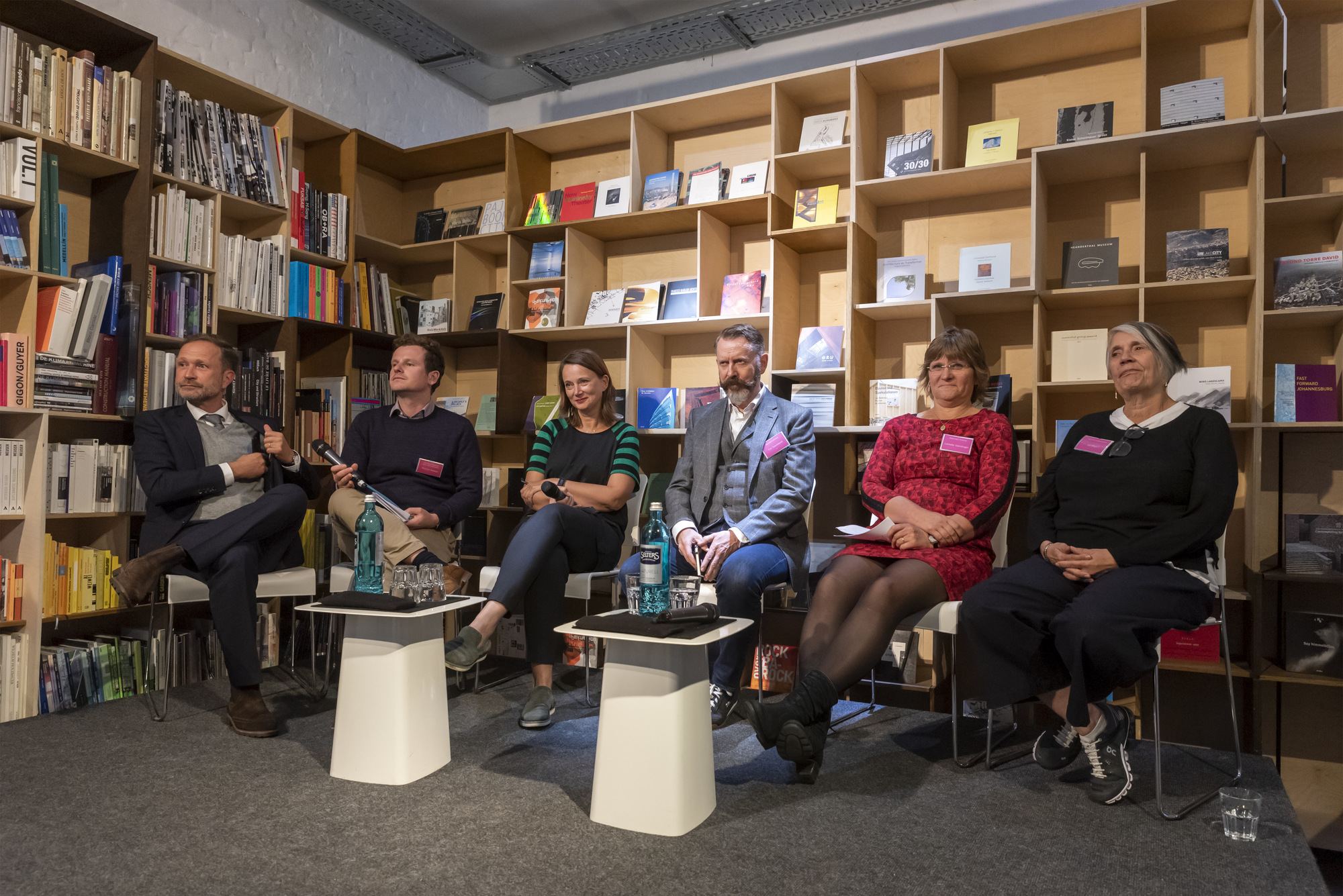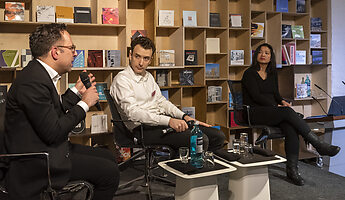With the growing relevance of discussing health in cities, UNStudio collaborated with ANCB to host a series of lab talks, Towards a Healthy City, where panels of interdisciplinary experts come together and discuss various approaches in developing healthier cities.
The first Lab Talk Series on The Urban Approach was hosted last September, where four speakers presented their perspectives on how the built environment can produce and optimize health. These perspectives were presented by Lenneke Vaandrager (Associate Professor Health and Society, Wageningen University), Tim Townshend (Professor of Urban Design for Health, Newcastle University), Jos Boys (Senior Lecturer in Environments for Learning, Bartlett Real Estate Institute, University College London) and Andreas Malich (Developer, Head of International Campus Berlin Branch), followed by a panel discussion with Thomas Honeck (International Relations, Senatskanzlei Berlin) and Astrid Piber (Partner and Senior Architect of UNStudio, Amsterdam).
Lenneke Vaandrager introduces the links between the topics of health and society in her research. Using her basic research model, she shows that our lifestyles are very much embedded in the natural, built environment and the social environment. She discusses the importance of intersectoral considerations and collaborations in the creation of greener and healthier environments that can support a better quality of life. Furthermore, Vaandrager presents her research findings as she emphasizes on the inclusive nature of health and the importance of citizen participation in urban greening initiatives.
Tim Townshend begins his lecture by questioning whether greening can be the default answer to everything. As an alternative, he presents a framework that focuses on human flourishing, defined by a combination of hedonic and eudemonic approaches (emotional, psychological and social well-being). Townshend presented the idea of what wellness means beyond the essentials, and questions whether we can design activating environments according to how they feel rather than how they look. On top of that, Townshend also emphasizes the importance of universal design and accommodating to the plurality of needs and aspirations.
Most people tend to associate the word “health” with the idea of being active, energetic and highly mobile. Having worked with disabled artists, Jos Boys points out that today, most environments are created for "normal" people and then are adapted accordingly for people with disabilities. But what if we start with the minority? Boys’ presents "The DIS/ORDINARY Architecture”, a project of hers inspired by different artists and activists with the goal of combining social, spatial and material justice with health aspects. Instead of discussing on how cities can contribute to public health, Boys looks at the issue the other way around as she dives into how people become unhealthy through cities, touching upon subjects such as politics and discrimination caused by inappropriate architecture.
Andreas Malich offers us an alternative (yet realist) insight in considering healthy cities as he focuses on establishing a balance between WHO’s standards for healthy cities and the prospects of project development. He dives into the current development project at the RAW site in East Berlin and emphasizes the importance of inclusivity in the design dialogue between stakeholders and the public while drawing parallels with WHO's expectations for Healthy Cities. Find out more about the specificities and further developments of the RAW area in Malich’s lecture.
The lectures were followed by a panel discussion, joined additionally by Thomas Honeck and Astrid Piber. While Honeck emphasized the importance of integrating and involving citizens in the creation of communicative spaces, Piber on the other hand, agreed to the importance of creating healthier cities for all, however, suggested that in practice there is in fact too much for planners to consider. She dives into discussing certain priorities that were brought up by previous lectures: should we prioritize minorities first? Or should we start with specific aspects and not with general ones? While the lectures paid a lot of attention to "green cities", majority of the people in the past lived in "blue landscapes" that did not correspond to contemporary shapes of cities, but more so to rural regions: don’t we have to take that into account?
The second part of the discussion was opened to the floor, where questions involving public volunteerism, pollution, the social aspect of health and the relationship between the environment and mental health were touched upon.
At the end of the day, the greater the number of perspectives, the higher the level of complexity the discussion is pertaining to healthy cities. But this complexity, in turn, has brought us closer to envision what a healthy city can look like.
Stay tuned for the second Lab Talk Series, as we discuss concepts of health and wellbeing at the building scale.


